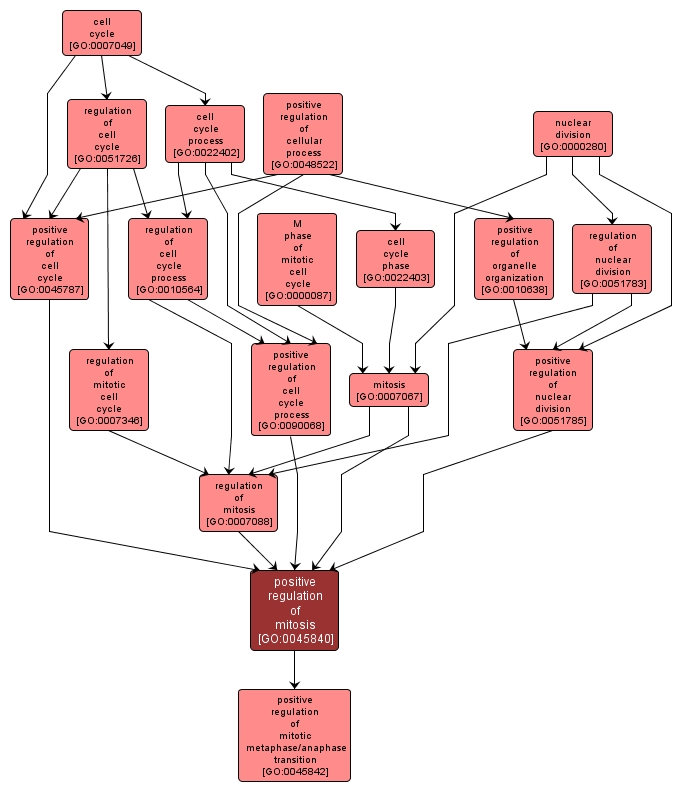GO TERM SUMMARY
|
| Name: |
positive regulation of mitosis |
| Acc: |
GO:0045840 |
| Aspect: |
Biological Process |
| Desc: |
Any process that activates or increases the frequency, rate or extent of mitosis. |
Synonyms:
- stimulation of mitosis
- activation of mitosis
- up regulation of mitosis
- up-regulation of mitosis
- mitogenic activity
- upregulation of mitosis
|
|

|
INTERACTIVE GO GRAPH
|














